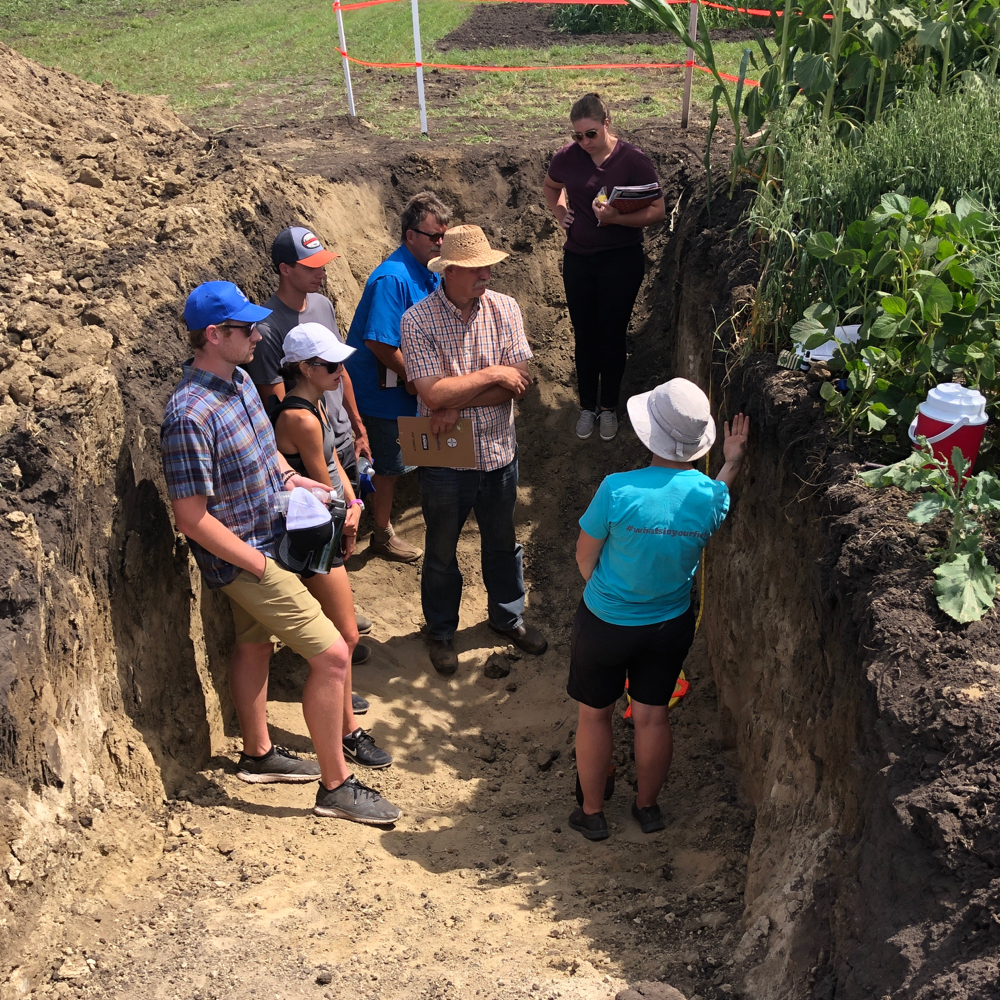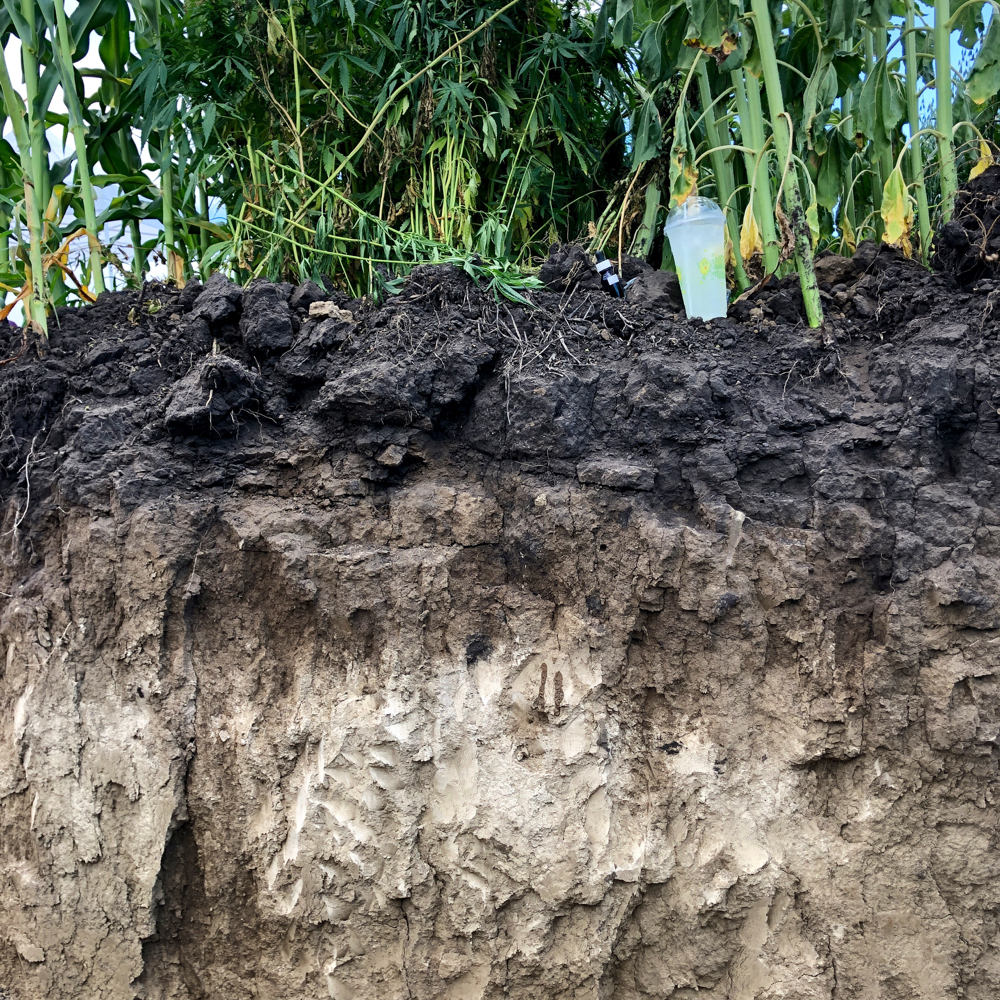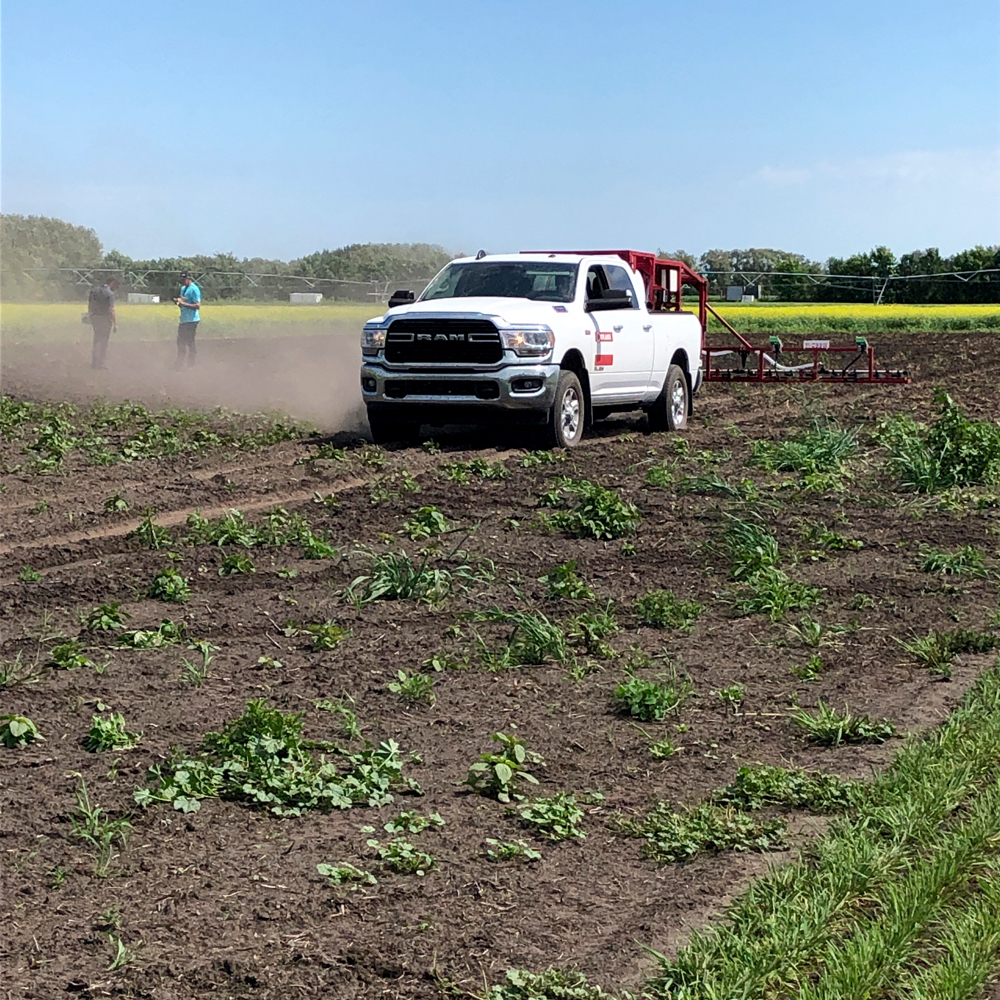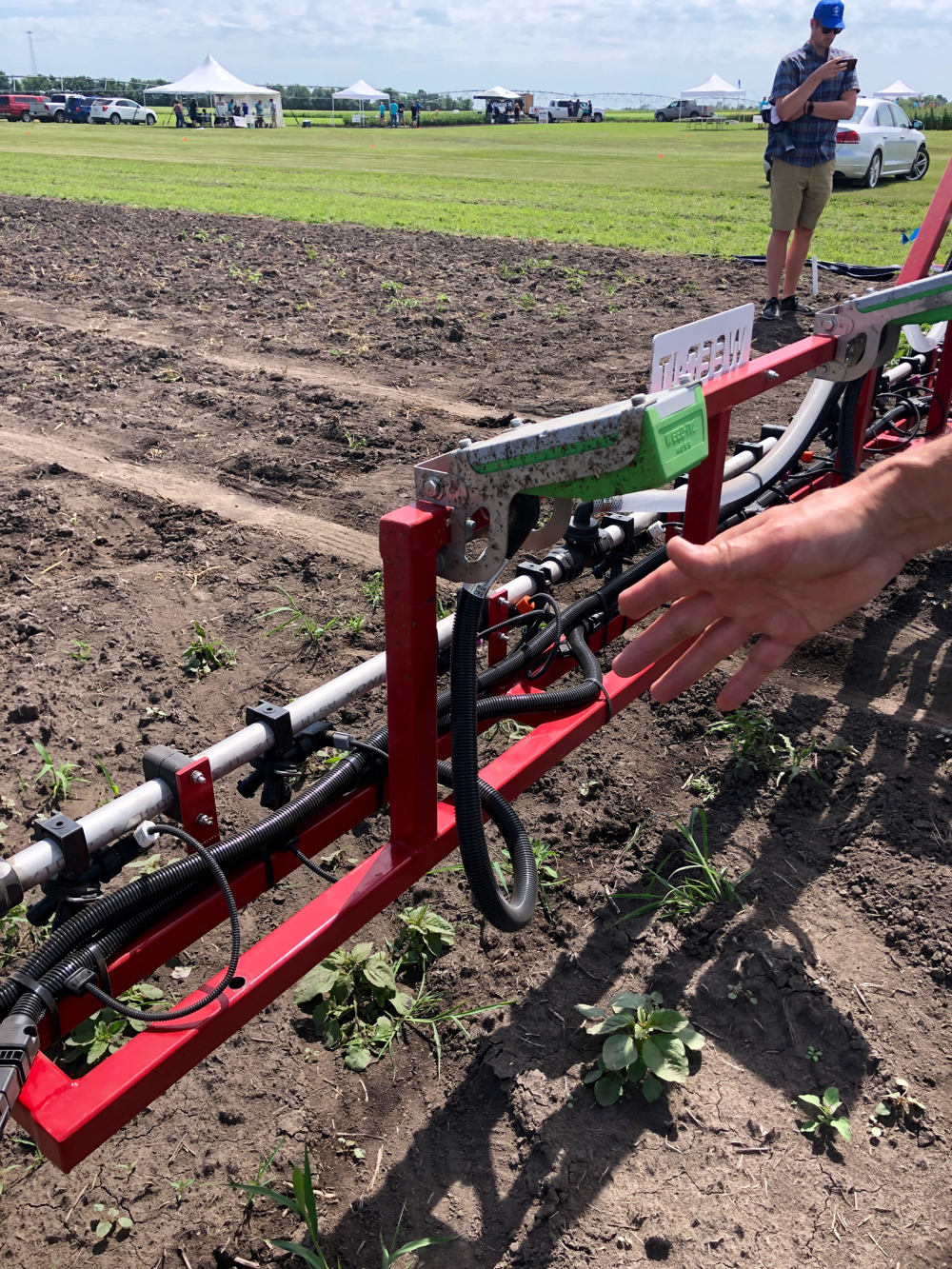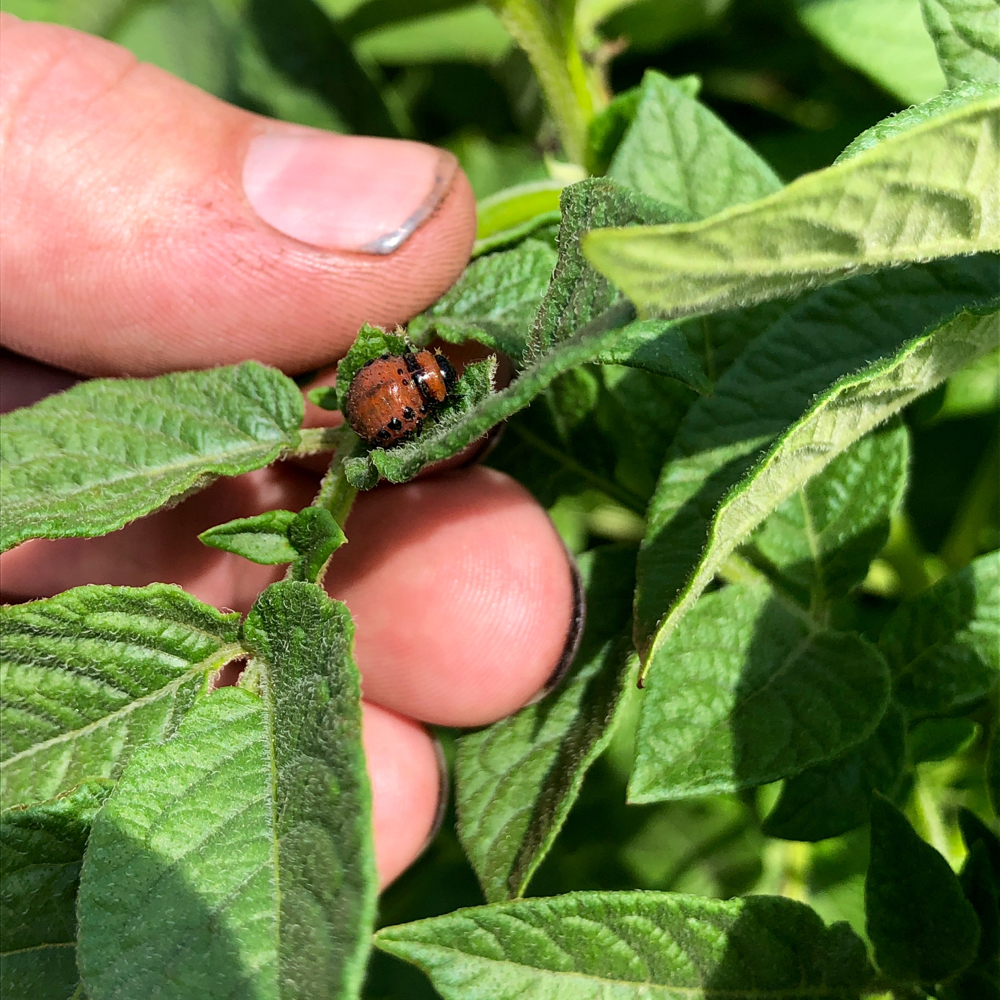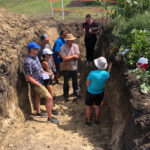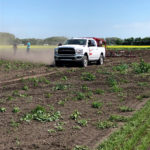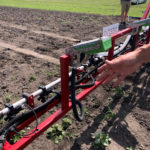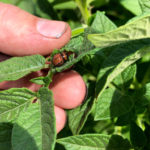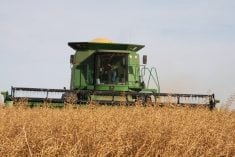
dinner-lminogue
Food vendors were on hand throughout the day, including Saskatoon berry pie provided by the local 4-H club.
Photo: Leeann Minogue
long view-lminogue
Organizers had been busy since spring, planting crop plots on the site at the Carberry Canada-Manitoba Crop Diversification Centre.
Photo: Leeann Minogue
soil pit-lminogue
A large on-site hole allowed farmers to get a good look at the soil profile, down more than a metre deep.
Photo: Leeann Minogue
soil pit 2-lminogue
“This is a beautiful soil profile,” said AAFC agronomist Curtis Cavers about the dirt at the Carberry site.
Photo: Leeann Minogue
weed it2-lminogue
Rometron’s WEED-it technology allows farmers to reduce chemical use by turning off nozzles when no foliage is detected.
Photo: Leeann Minogue
WEED-it-lminogue
WEED-it technology can be retrofitted to fit most sprayers.
Photo: Leeann Minogue
colorado potato beetle-lminogue
Colorado potato beetles are commonly found on Manitoba potatoes.
Photo: Leeann Minogue
On June 24, Crops-a-palooza brought together 10 different hosting organizations (see at bottom), a handful of corporate sponsors, and government researchers and other volunteers. More than 200 farmers and agronomists came out to see the crops and research on display at the Canada-Manitoba Crop Diversification Centre at Carberry, Manitoba.
This show of industry cooperation was reassuring and also educational, with growing crop displays, research poster presentations and a wide variety of experts on hand to discuss research and agronomy.
Agriculture and Agri-Food Canada agronomist Curtis Cavers spent most of the day standing in a hole. Soil researchers had brought out a backhoe to provide an opportunity for farmers to get a good look at the soil profile, more than a metre down. The soil on the site happened to be well-drained, with no compacted layers. “This is as close to an ideal soil profile as you can get,” Cavers said. Visitors were reminded that soil profiles can vary greatly on a farm, or even within a field.
Read Also

Claas brings 1000 Series SP forage harvesters to Canada
In mid-August, Claas unveiled its new line of Jaguar forage harvesters at an event in Visalia, California, deep in the heart of that state’s dairy region.
Zach Frederick, an applied potato research agronomist with the Manitoba Horticulture Productivity Enhancement Centre, was on hand to discuss potato research. The potatoes growing at the site were infested with Colorado potato beetles. “These plants are fairly tolerant,” he said. Many potato growers will wait to spray for insect control until the beetles have matured and the eggs have hatched.
The private sector was also involved in the displays, which included a sprayer demonstration. Sprayer expert and farmer favourite Tom Wolf, with Agrimetrix Research and Training, was on hand to promote a new spraying option. WEED-It, developed by Dutch company Rometron, is similar to other sprayer sensors, sensing green foliage and automatically turning sprayer nozzles off when no greenery is detected, allowing for less chemical use. WEED-It sensors, Wolf explained, can be retrofitted onto most farmers’ existing sprayers for about $1,500/foot, depending on the length of the existing sprayer boom.
Look for in-depth stories about each of these three displays in future issues of Grainews.
Hosting organizations
Ten different Manitoba commodity associations came together to host Crops-a-palooza at Carberry, Manitoba, on July 24.
- Manitoba Canola Growers Association
- Manitoba Corn Growers Association
- Manitoba Oat Growers Association
- Manitoba Pulse & Soybean Growers
- Manitoba Wheat and Barley Growers
- National Sunflower Association
- Winter Cereals Manitoba
- Canola Council of Canada
- Hemp Genetics International
- Keystone Potato Producers Association


